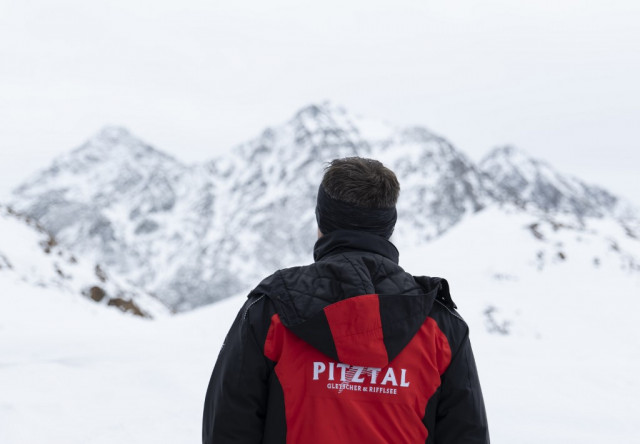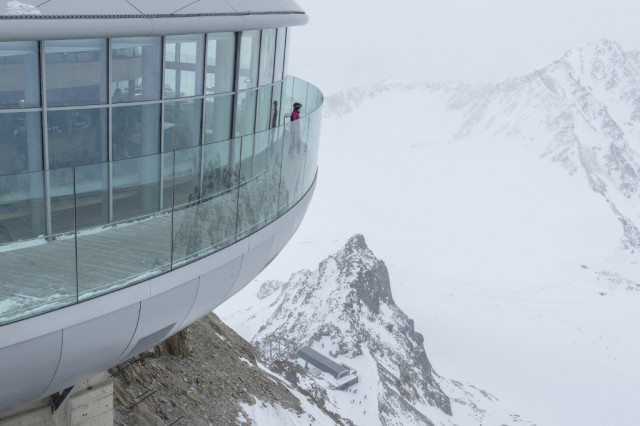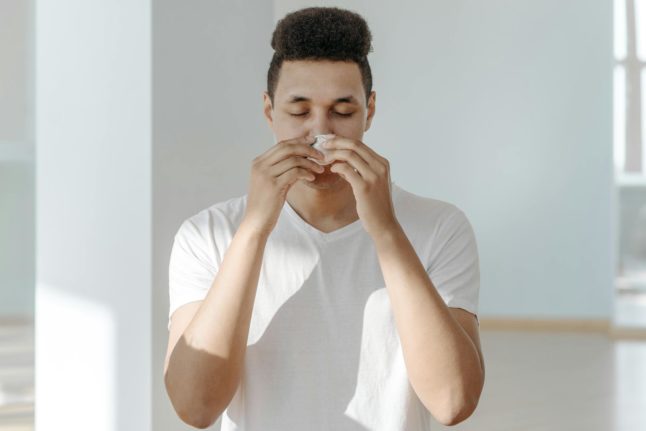Schultes is the managing director of the Pitztaler Gletscherbahnen mountain lift company, which is trying to win approval for a new ski area to connect the Pitztaler glacier to the neighbouring Oetztal formation.
Even though the last winter season saw Austria break records for accommodation booked, visitor numbers have stagnated in Schultes' native valley. He is banking on the scheme to bring them back.
But the project has drawn the ire of environmentalists and the Greens, at a time when the party is negotiating to be in government — and amid growing concerns about the sustainability of winter sports.
“The Pitztal glacier has hardly changed for the past 30 years in terms of offer — the amount of slopes and facilities — and given that this is winter guests' number one criteria, it is absolutely necessary to carry out this
merger,” Schultes says.
In Tyrol state, where the 3,440-metre (11,290-feet)-high Pitztal glacier is located, every fourth job and every third euro ($1.10) earned come from tourism and leisure.
 AFP
AFP
Spectacular, Bond-like scenery
The project was first floated five years ago and has been gradually winding its way through the approvals process, with an environmental impact hearing due in January.
If it does get the go-ahead, the project — estimated to cost more than 130 million euros ($140 million) and take six years to build — will add more than 64 hectares (160 acres) of slopes to the current 120 hectares.
In addition it will link up to the Oetztal glacier area, which encompasses the popular Soelden resort. Its spectacular scenery may be familiar to anyone who watched the snow-chase sequence in the last James Bond film, 'Spectre'.
The project envisages a summit station with restaurant, two new cable cars, a ski tunnel, artificial snow generators and, most importantly for the Pitztal, a new gondola — a cable lift to bring guests up from the valley into the new ski area.
Schultes says the current mountain railway built in 1983 is outdated, as it can only carry a maximum of 1,100 people per hour. With the new gondola, that capacity would triple.
But the project in the area, which already boasts Austria's highest mountain gondola, has drawn criticism from those questioning the sustainability of such plans.
 AFP
AFP
'Massive destruction'
A team of researchers in Switzerland warned earlier this year that unchecked greenhouse gas emissions could see more than 90-percent of glaciers in the Alps disappear by the end of the century.
They say that because of historic emissions and current CO2 levels, the Alps will lose half of their glaciers no matter what is done about emissions.
Environmentalist groups have formed an alliance to lobby against the
Pitztal project's “massive destruction… of an untouched landscape”.
An online petition against the plans has racked up more than 150,000 signatures within two months.
And the Greens, who have governed Tyrol in coalition with the conservative People's Party (OeVP) since 2013, have also come out against the project.
“The massive encroachment into nature is irreversible,” Georg Kaltschmid, a Green Tyrol parliamentarian, told AFP.
Political tensions
Tyrol is one of two states governed by an OeVP-Green coalition, and the two parties are currently negotiating to enter government together on a national level.
If that did happen, it would be the first time the Greens entered government at national level.
OeVP leader Sebastian Kurz is hoping to return as chancellor after his previous coalition with the far-right fell apart earlier this year.
Kaltschmid insists the two parties “work very well together” despite their differences over the glacier plans.
OeVP state premier Guenther Platter has spoken out in support of the project, citing the boost to tourism.
“Of course even in a coalition there are certain projects where both sides don't agree,” Kaltschmid tells AFP.
While several winter sports enthusiasts told AFP they would welcome new slopes, describing it as a “gain for the area”, one said the ski resort's current smaller size contributed to its “charm”.
Schultes, for one, is not concerned about receding glaciers endangering the project.
“If it's possible to ski anywhere, then it's at high altitude — even in the future, without a glacier,” he says.




 Please whitelist us to continue reading.
Please whitelist us to continue reading.
Member comments